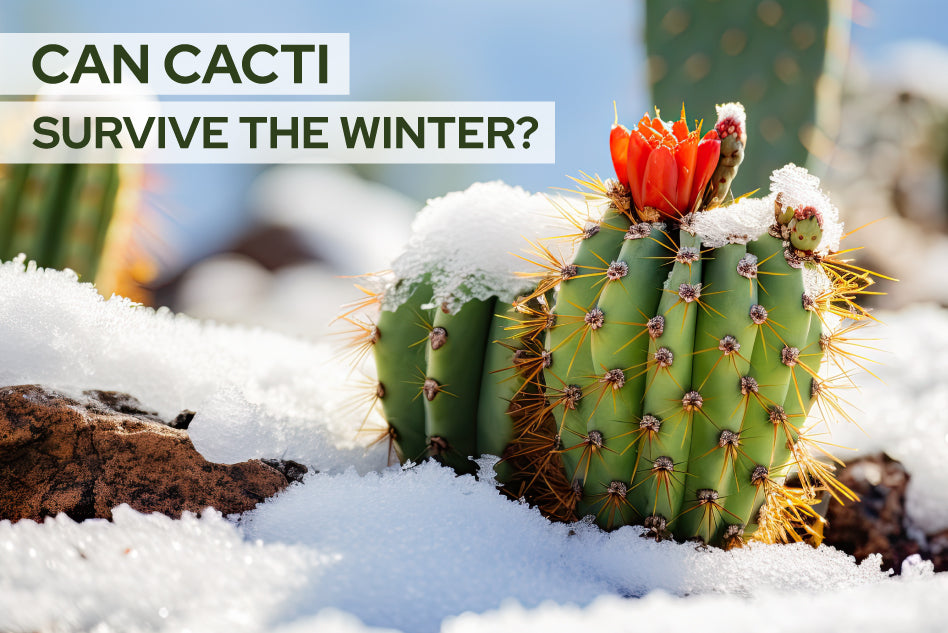When one thinks of cacti, the mind often drifts to sun-drenched deserts and arid landscapes. However, what happens when winter’s frosty grip descends upon these resilient plants? Can cacti survive the winter? The short answer is yes, but with a caveat: not all cacti are created equal, and their ability to endure cold temperatures hinges on several factors. This article will guide you through the intricacies of winter care for your beloved cacti, promising a shift in perspective and illuminating the nuances of their adaptability.
Understanding the unique requirements of each cactus species, along with their general survival strategies during the cold months, is essential for any enthusiast keen on preserving their green companions. Here, we will delve into winter hardy cacti, preferred environmental conditions, and essential care tips to ensure that your cacti thrive through the season’s chill.
Winter Hardy Cacti: The Survivors of the Frigid
Not every cactus will weather the winter’s unforgiving chill with the same aplomb. Some varieties, particularly those native to colder climates, exhibit remarkable resilience. The Opuntia, more commonly known as the prickly pear cactus, is among the most notable. With its ability to tolerate sub-zero temperatures, this cactus challenges the stereotype of cacti being strictly desert dwellers. Furthermore, other species such as the Echinocereus and certain types of Ferocactus also possess a hardiness that enables them to brave winter’s embrace.
Before winter’s onset approaches, discerning which of your cacti are cold-tolerant is vital. Take stock of your collection and consider each species’ native habitat. This knowledge forms the bedrock of your winter care strategy.
Microclimates Matter: Create the Perfect Environment
Even winter hardy cacti require specific conditions to survive the cold months unscathed. Much like the nuances of climate in the natural world, microclimates in your home or garden can significantly influence your cactus’s health. Indoors, find a bright, sunny location, away from drafty windows and heating vents. Ideally, a south-facing window provides the optimal light conditions they crave while ensuring warmth during dismal days.
For those contemplating outdoor placement, consider using a sheltered space. Planting cacti in a rock garden or alongside other robust plants can offer not only protection but also an appealing aesthetic. If temperatures dip perilously low, using mulch made from organic materials or frost cloth can add an extra layer of security, mitigating extreme temperature swings.
Water Wisely: A Delicate Balancing Act
During winter, the watering regime requires a paradigm shift. The temptation to over-water during the colder months is a common pitfall. Most cacti enter a dormant state as they sense the change in seasons. This dormancy necessitates infrequent watering, as the risk of rot skyrockets when combined with cold, moist soil.
When you do water, do so sparingly. Test the soil’s moisture; if it feels dry several inches down, it may be time for a drink. It is crucial to allow the soil to dry out completely before the next watering to prevent detrimental fungal issues. A good rule of thumb is to water every 4 to 6 weeks; however, this may vary based on specific plant needs and indoor humidity levels.
Positioning plays an important role in drainage as well. Utilize pots with drainage holes, and consider incorporating a gritty cactus mix to facilitate faster moisture evaporation. Understanding the balance between hydration and neglect is vital to avoid the unsettling consequences of overzealous care.
Monitoring Temperature: Staying Within the Comfort Zone
Temperature fluctuations can dramatically impact a cactus’s well-being. While many hardy varieties can withstand brief encounters with frost, prolonged exposure to freezing temperatures can wreak havoc. It is advisable to keep indoor cacti in environments where temperatures hover above 50°F (10°C). For those in regions facing harsher winters, sheltering cacti from frost is crucial. Bring outdoor cacti inside before the first hard freeze, and allow them to acclimatize gradually to indoor conditions.
Implementing a heat source, such as a grow light or space heater, can also help maintain a stable environment. Be mindful that direct heat can desiccate the air, so maintaining humidity with a pebble tray or humidifier can foster a more tolerable atmosphere for your spiny friends.
Pest Management: Vigilance is Key
Winter is often a prime time for pests to invade your cacti. As plants become stressed due to extreme temperatures, they may become more susceptible to infestations from mealybugs or spider mites. Inspect your cacti regularly for signs of unwelcome guests. Should an infestation occur, organic insecticidal soap can offer a gentle yet effective solution.
Taking proactive measures to ensure your cacti are free from pests, particularly as they might be more vulnerable during the winter months, is crucial. Keep the environment uncluttered, and gradually adjust conditions as the festive season winds down, ensuring a flourishing reprieve as the spring thaw beckons.
In conclusion, caring for cacti during winter requires a blend of knowledge, attention, and adaptation. By understanding their unique needs and implementing a strategy tailored to their resilience, you can successfully navigate the challenges of the cold months. Cacti are astonishingly adaptable, and with the right care, your prickly companions can not only survive the winter but emerge rejuvenated and ready to thrive as the days grow longer and temperature rises once again.





Leave a Comment